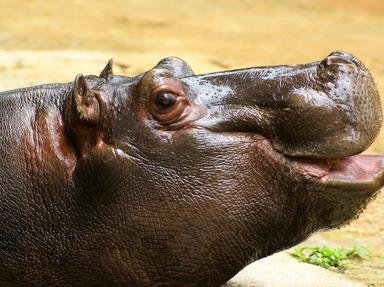Quiz Answer Key and Fun Facts
1. These South American amphibians are known for having translucent skin, allowing you to view their organs. They are very difficult to find because of their excellent camouflage and the fact that they live on the top of the rainforest canopy and behind waterfalls.
2. These flying creatures are known for making weird sounds and flying in an eerie way at night. Many of them can be found huddled together in trees. Most of these animals live in Australia, but a certain species can be found in South America.
3. These primates are the closest living relatives of human beings, sharing about 98.9% of our DNA. They live in the Congo Basin in Central Africa. They can walk on their back legs and live to be about forty years old.
4. These interesting animals are like a cross between an anteater and an armadillo. They have a long tongue and tail, but they are also covered in scales and have the ability to curl into a ball when threatened. They used to have many species across Africa and Asia, but they are now becoming harder to find.
5. These turtles are covered in crusty-looking bumps. They can be found in slow-moving rivers and swamps throughout South America. They can be kept as exotic pets. Although they don't move very much, they can use their long necks to grab fish and invertebrates.
6. These Cephalopods are found deep in the ocean. They got their name because the flaps on their "heads" make them look like an elephant. The same flaps are used to help them propel through water. Another name for them is the Grimpotheuthis. They can flush their translucent skin into different colors.
7. These nocturnal little reptiles from Asia can adapt to live in both rain forests and human civilizations. Although they are native to Asia, they were introduced into the wild of the U.S. and the Caribbean. They have a bluish-gray body with spots ranging in color from yellow to bright red. They prefer to live in solitude and can deliver a nasty bite when bothered.
8. These large birds stand out in a crowd. The adults have fluffy plumage on their heads and the young ones have black and white stripes. Although are commonly seen now, they were nearly hunted to extinction in the 19th century because their feathers were popular in making hats. They live most of their lives near water and eat fish and aquatic invertebrates.
9. These amphibians from South America spend their time in treetops high above ground to search for bugs. They are very common and are kept as pets in many collections. They are known for being able to excrete poisonous white liquid when they feel threatened or stressed.
10. Finally, we're at the last question. These horses are one of the few remaining true wild horses, not just domesticated horses turned feral. They had been extinct in the wild for a bit, but then were reintroduced in 1992. They are a tan color with a stocky appearance and can be found in small areas of Asia.
Source: Author
braniac-girl
This quiz was reviewed by FunTrivia editor
Tizzabelle before going online.
Any errors found in FunTrivia content are routinely corrected through our feedback system.

